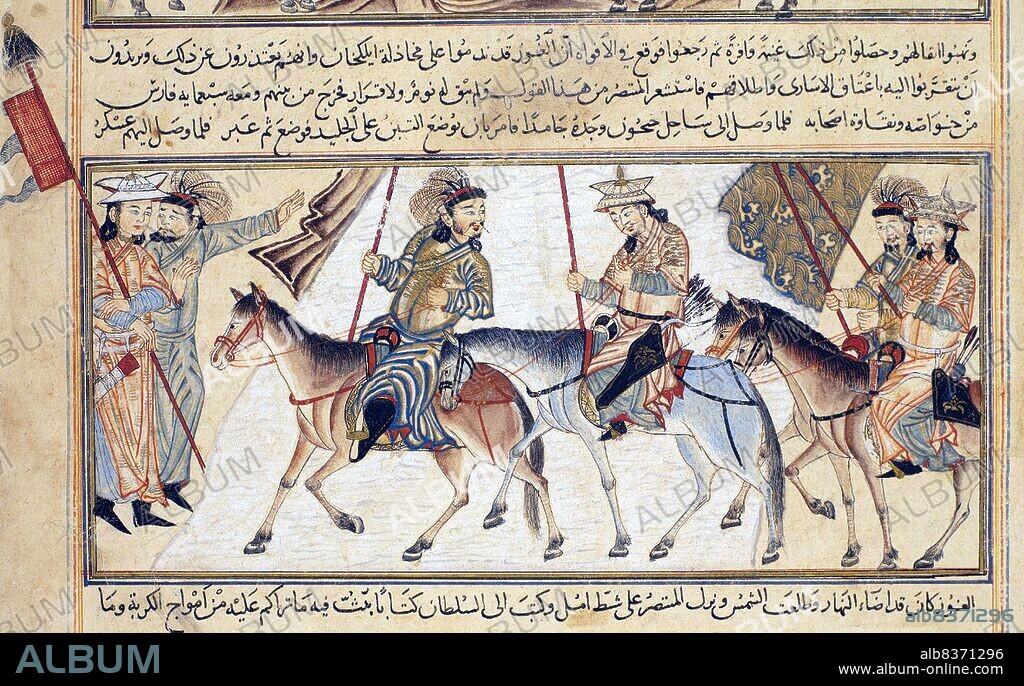alb8371296
Iran / Persia: The Samanid king Ismail Muntasir ibn Nuh II (died 1005) crossing the frozen Jayhun River (Amu Darya) in Transoxiana (Uzbekistan), from Rashid Al-Din, 'History of the World', c. 1306-1311 CE

|
Zu einem anderen Lightbox hinzufügen |
|
Zu einem anderen Lightbox hinzufügen |



Haben Sie bereits ein Konto? Anmelden
Sie haben kein Konto? Registrieren
Dieses Bild kaufen.
Nutzung auswählen:

Titel:
Iran / Persia: The Samanid king Ismail Muntasir ibn Nuh II (died 1005) crossing the frozen Jayhun River (Amu Darya) in Transoxiana (Uzbekistan), from Rashid Al-Din, 'History of the World', c. 1306-1311 CE
Untertitel:
Siehe automatische Übersetzung
The Samanid dynasty, also known as the Samanid Empire, or simply Samanids (819999), was a Sunni Persian Empire in Central Asia, named after its founder Saman Khuda, a landowner from Balkh, who converted to Islam despite being from Zoroastrian nobility.
. It was a native Persian dynasty in Greater Iran and Central Asia after the collapse of the Sassanid Persian empire caused by the Arab conquest.
. Isma'il Muntasir attempted to resurrect the Samanid state in Transoxiana and eastern Iran (10001005). He was the son of Nuh II.
. It was a native Persian dynasty in Greater Iran and Central Asia after the collapse of the Sassanid Persian empire caused by the Arab conquest.
. Isma'il Muntasir attempted to resurrect the Samanid state in Transoxiana and eastern Iran (10001005). He was the son of Nuh II.
Bildnachweis:
Album / Universal Images Group / Pictures From History
Freigaben (Releases):
Model: Nein - Eigentum: Nein
Rechtefragen?
Rechtefragen?
Bildgröße:
5100 x 3151 px | 46.0 MB
Druckgröße:
43.2 x 26.7 cm | 17.0 x 10.5 in (300 dpi)
Schlüsselwörter:
ASIEN • ASIEN, KONTINENT • GEMAELDE • IRAN • ISLAM • KOENIG • KONTINENT, ASIEN • KUNST • KÖNIG • MALEREI • MOHAMMEDANERIN • MOSLEMIN • MUSLIMIN • MYTHEN: PERSISCH • PERSISCH • PERSISCHE MYTHEN • PERSISCHE • RELIGION
 Pinterest
Pinterest Twitter
Twitter Facebook
Facebook Link kopieren
Link kopieren Email
Email
